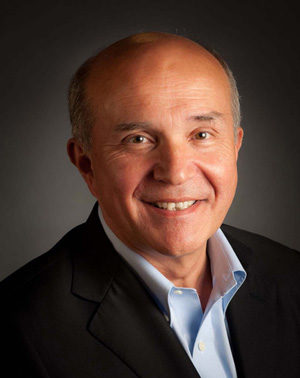 |
Johannes A. Lercher
Professor
Department of Chemistry
Technische Universität München
Garching, Germany
Institute for Integrated Catalysis
Pacific Northwest National Laboratory
Richland, WA
Johannes A. Lercher, studied chemistry at TU Wien, receiving his PhD in 1981 at the same institution. After a visiting lectureship at Yale University, he joined TU Wien as lecturer, later associate professor. 1993 he was appointed professor in the Department of Chemical Technology at the University Twente, the Netherlands and in 1998 in the Department of Chemistry of TU München, Germany. Since 2011 he is also director of the Institute for Integrated Catalysis at the Pacific Northwest National Laboratory, USA. He is external member of the Austrian Academy of Sciences and member of the Academia Europaea. He is honorary professor at the China University of Petroleum, the Qingdao Institute of Bioenergy and Bioprocess Technology of the Chinese Academy of Sciences and the Dalian Institute of Chemical Physics. Author of over 490 papers and 17 patents, he is currently editor-in-chief of the Journal of Catalysis. Recent awards include the Kozo Tanabe Award for Acid-Base Catalysis, the Burwell Lectureship of the North American Catalysis Society, the Francois Gault Lectureship of the Federation of European Catalysis Societies, and the R.B. Anderson Award of the Canadian Catalysis Society.
His research interests are related to catalysis in zeolites as well as on nanostructured oxides and sulfides, focusing on bifunctional and concerted catalysis, as well as understanding the influence of the steric and chemical environment on the properties of active centers in a catalytic site. Catalytic reactions studied include acid catalyzed activation, functionalization, and transformation of alkanes, the oxidative activation of light alkanes including methane, the hydrogenation, and hydrodefunctionalization of complex molecules and polymers from biogenic and fossil origins, such as lignin and aromatic molecules containing N, S and O. His contributions have markedly advanced the understanding of how molecules are sorbed and converted in microporous materials, highlighting the contributions of dispersion forces and direct polarizing interactions. Elucidating the role of polarizable cations such as La3+ has allowed synthesizing catalysts that are able to activate alkanes close to ambient temperatures. Using insight into the elementary steps and selective control of sorption and diffusion in molecular sieves, novel hierarchic materials have been designed, combining shape selectivity with the enhanced reactivity through improved transport properties.
Thursday, April 30, 2015
Reception at 3:30 p.m. Engineering Hall Lobby
Lecture 4:00 p.m.
1610 Engineering Hall
"Towards Understanding Catalyzed Transformation of Lignin to Fuels on a Molecular Level"
The catalytic depolymerization and conversion of lignocellulose to hydrocarbon energy carriers has seen significant attention over the last decade in attempts to reduce the carbon footprint of transportation fuels. This chemistry has, however, also highlighted how little is known about catalyzed transformations in condensed phase on a molecular level. The lecture will compare, thus, the gas solid and gas liquid phase reductive conversions of increasingly complex of lignin-derived molecules to produce fuels catalytically. The state of acid-base and metal sites in various environments, their interactions with reactants and products, as well as their catalytic properties will be described combining spectroscopy, kinetic measurements, and theory. Three key steps in the sequence are discussed in detail, the hydrolytic and hydrogenolytic deconstruction of lignin, the hydrodeoxygenation and decarbonylation/ decarboxylation and the hydroalkylation to build up larger molecules. Overall, it will be shown, how the detailed knowledge of the elementary reaction steps and the surface chemistry of the catalyst components in water and solvent combinations allow realizing successful catalytic strategies.
Friday, May 1, 2015
Refreshments served at 3:30 p.m.
Lecture 4:00 p.m.
1610 Engineering Hall
"Influencing Catalytic Rates by Constraints – the Importance of the Environment"
Understanding the elementary steps in acid-base and metal catalyzed organic transformations is a key for sustainable chemical conversions. Solid acids and bases with nano-pores such as zeolites act as solid Brønsted and Lewis acids, widely used as catalysts with well-defined acid-base sites and a well-defined reaction space around the sites. Within the pores of molecular sieves reacting molecules are constrained in a reaction space, which can be subtly adjusted via direct synthesis, as well as via the addition of cations, oxidic clusters or organic fragments. The impact of such changes on mono- and bimolecular reactions such as elimination reactions of alcohols, cracking and alkylation of hydrocarbons are discussed for gas and liquid phase reactions. Experimental methods to define the state of the reacting molecules combined with detailed kinetic analysis and theory will be used to explain the principal contributions of the interactions and the confinement to determine reaction rates. It will be discussed how reaction rates and pathways can be tailored using the space available for a transition state and the chemical constituents around the active site.
